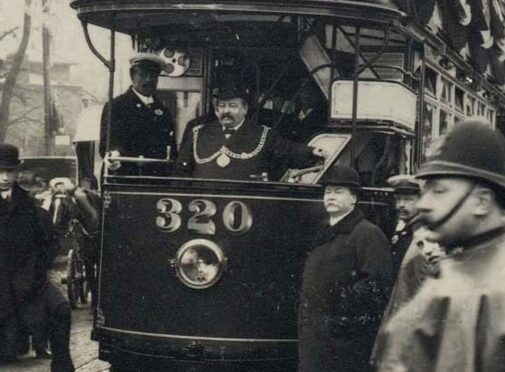
A Scottish wrestler revealed to be Britain’s first black Olympian should be properly honoured, according to the sport’s governing body.
Researchers last week told how the first recorded black athlete to compete on behalf of Britain was Edinburgh-born grappler Louis Bruce.
He was born in 1875 to an English widower called Jane Elizabeth Doney. He moved to Plymouth and lived in London before competing in the 1908 London Olympics, winning his first bout but going out in his second.
Alex Gladkov, governance director of Scottish Wrestling, was thrilled to discover Bruce’s Olympic’s landmark and believes Scottish sports authorities should find a way to commemorate Bruce.
He said, “Scottish Wrestling will play its part to commemorate Louis Bruce and continue the memory of him and his accomplishments.
“It was amazing to learn he was the first black British Olympian and of his achievements.
“His story is hugely inspiring, and we should celebrate athletes of the past who have broken new grounds to nurture and shape a brighter future.”
While Bruce’s name has always been listed in historic Olympic documents, the fact that he was black had been lost to time. A tendency to only initial first names of competing athletes led to him being misidentified as Lawrence Bruce in Olympic history books
When historians Connor Mah and Rob Gilmore were looking at early records, they found racialised language on promotional material from the time around a London-based boxer who had the second name Bruce.
They enlisted the help of Scottish sports historian Andy Mitchell, who helped them find Bruce’s birth certificate, and a photo of Bruce at his job as a tram driver in 1906.
Mitchell said: “I found Bruce’s birth certificate as he was born illegitimate and was listed under his mother’s name of Doney instead of Bruce. After more digging, I found that someone named Lewis Bruce had been recognised as one of the first black tram drivers in London, and it didn’t take much to see that the spelling had changed and that it was the same person.”
Bruce was a trailblazer who dabbled in many different pursuits. As well as being a wrestler, boxer and tram inspector, he was also a dancer, ragtime singer and comedian, and later owned his own newsagents.
Mitchell explained that it must have been difficult for Bruce to pursue his career ambitions due to prejudice about his race. He explained, “He had to make his way in life against very entrenched social attitudes. It exemplifies how difficult Louis Bruce may have found it to not only make a good career in his working life, but also to be accepted in his sporting life. He did a lot against adversity, and did a very good job of it.”
In late 19th Century, it was relatively common for people of colour to be an active part of sporting communities throughout the UK, and especially in Scotland.
Footballer Andrew Watson is perhaps the most famous, captaining Scotland over 6-1 win against England in 1881. After the First World War, however, attitudes became increasingly stringent and more pointedly racist, and people of colour in professional sports in the UK fell off significantly.
There has been a movement in recent years to uncover the stories of these important and overlooked athletes of colour, and to commemorate their contributions and importance in their respective sports.
Watson, for example, has been immortalised in murals at the original Hampden Park and in Glasgow’s Shawlands, and a there are calls for a statue of him at Hampden.

Enjoy the convenience of having The Sunday Post delivered as a digital ePaper straight to your smartphone, tablet or computer.
Subscribe for only £5.49 a month and enjoy all the benefits of the printed paper as a digital replica.
Subscribe